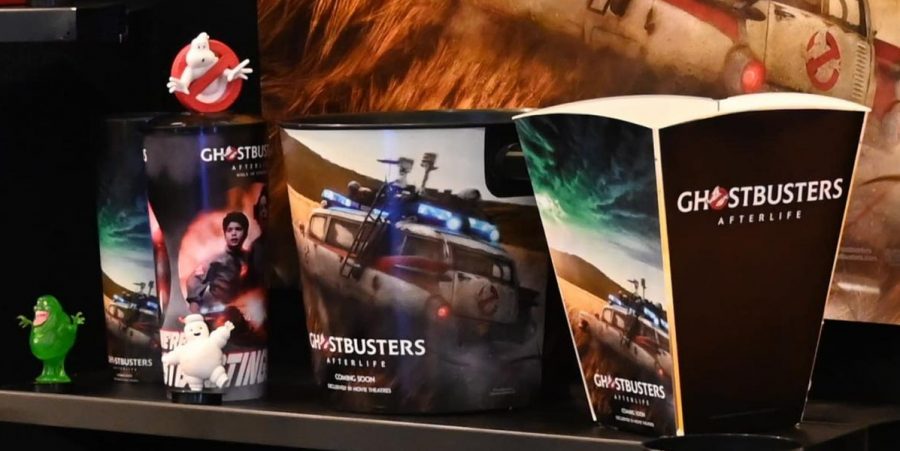‘Ghostbusters: Afterlife’ review and the state of modern cinema
Jack Harris ’22 reviews “Ghostbusters: Afterlife” and discusses what the films represents in modern Hollywood.
“Ghostbusters: Afterlife” is the 4th theatrical installment in franchise history.
I saw “Ghostbusters: Afterlife” on the Friday night it opened across the country. The film was disappointing, with a viewing experience to match. Of the nine other patrons with whom I shared a theater, I counted four who were bored enough by the film to start scrolling their social media and one so disinterested he fell asleep entirely. In a post-pandemic world, audiences are less eager than ever to trade in the comfort of a blanket and futon for the unease of dark, musky cinemas. Despite this, Hollywood continues to give fewer reasons than ever to come to the theater, with “Ghostbusters: Afterlife” merely being the newest example.
For better or worse, “Ghostbusters” is an iconic franchise. The series has been through many renditions, but “Afterlife” is the first since 1989 to reunite the original cast. Venkman, Stantz, Egon, Winston, Dana, and even Janine are all back, as well as an assortment of new faces. Each of the originals is played by their original actor, that is except for Egon, who is digitally recreated due to the death of Harold Ramis. As for the new roles, Carrie Coon plays Callie, the estranged daughter of Egon. She’s joined by her two children, Trevor and Phoebe, played by Finn Wolfhard and Mckenna Grace respectively. The cast is rounded out by Paul Rudd, Logan Kim, and Celeste O’Connor. It couldn’t have been a larger waste of the actors’ time.
The film is cluttered to the point that it feels unfinished, even with the 124-minute runtime. Various plot-lines are introduced, then left unresolved, yet so much time is wasted on exposition that the movie drags on far longer than necessary. The exposition also gets in the way of character development, and by the end of the film the characters are left seeming more empty than even the ghosts. Gozar returns as the villain in the newest film, and the heroes must once again stop the same ghost-pocalypse, making it even more confusing as to why so much time is spent explaining the plot.
Unlike many of today’s biggest premiere films, “Ghostbusters: Afterlife” is available only in theaters. So then why, why should any average person leave the comfort of their home and pay upwards of $12 for the experience of seeing this film? They shouldn’t. People have access to a greater inventory of entertainment than ever before, and yet with movie after movie like “Ghostbusters: Afterlife” they are given no reason to come out and see whatever schlock the theater has in store. They can get the schlock at home for $13.99 a month plus tax.
“Ghostbusters: Afterlife” ends with not one, but two end credits scenes. While the first is played for laughs, the second seems to tease a sequel, with the ECTO-1 being rolled back into the firehouse, and the vault of ghosts bursting at the seams. This cheap, unearned attempt to sequel-bait highlights just how average this film is. It follows the exact same formula that every other modern reboot does; constant jokes, mass nostalgia, and setting up for a franchise. So if there does end up being a sequel, what does it matter? This movie, and any potential sequel, add absolutely nothing to the world at large. All they do is waste time and money.
Your donation will support the student journalists of West High School. Your contribution will allow us to purchase Scholarship Yearbooks, newsroom equipment and cover our annual website hosting costs.

(he/him) Jack is the online copy editor & arts editor for WSS. He's a senior at west and is also involved in the west high Orchestra as a cellist....



